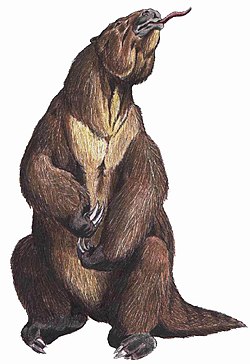| Prepoplanops | |
|---|---|
 | |
| Calcaneum of Prepoplanops boleadorensis | |
| Scientific classification | |
| Kingdom: | Animalia |
| Phylum: | Chordata |
| Class: | Mammalia |
| Order: | Pilosa |
| Family: | † Megatheriidae |
| Subfamily: | † Planopsinae |
| Genus: | † Prepoplanops Carlini et al. 2013 |
| Species: | †P. boleadorensis |
| Binomial name | |
| †Prepoplanops boleadorensis Carlini et al. 2013 | |
Prepoplanops is an extinct genus of ground sloth of the family Megatheriidae. It lived in the Miocene around 18 to 16 million years ago of what is now Argentina. The only known species is Prepoplanops boleadorensis. [1]

